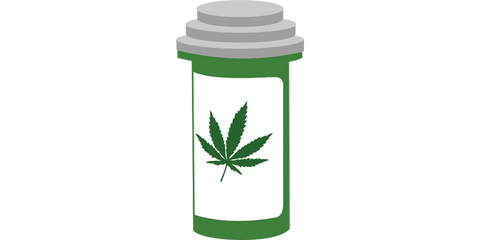Aside from maybe pilots and top-clearance government personnel, very few people will find themselves subjected to as many drug screenings as professional athletes. With the proliferation of HGH (human growth hormone), anabolic steroids, and other performance-enhancing drugs witnessed by the sports industry in the last 40 years, it makes sense that league commissioners would want to keep their sports as fair as possible. But why are athletes getting drug tested for marijuana? Does cannabis count as a performance-enhancing drug, and should leagues continue to test for it?
Is Cannabis A Performance-Enhancing Drug?

Perhaps the most publicized case of a high-profile athlete getting in hot water for marijuana use in recent months came from the Olympics, where potential gold medal contender Sha’Carri Richardson was barred from competing due to popping positive for THC. The ruling sparked a national conversation on whether not sports should even be drug testing for cannabis in the first place.
While some runners and athletes may find that smoking marijuana before a workout helps them get in the zone, unless you’re a competitive eater, cannabis is hardly a performance-enhancing drug. If anything, one would think that the body high and lethargy associated with high-THC cannabis would be a hindrance to any high-level athlete.
So why are leagues testing for marijuana? According to a 2011 paper published by the World Anti-Doping Agency (WADA), there are three reasons.
-
The WADA argues that cannabis could potentially enhance an athlete’s performance by reducing stress and anxiety, as well as reducing pain thereby helping athletes compete through injuries. Interestingly, the WADA doesn’t have any rules against prescription pharmaceuticals like benzodiazepines or hydrocodone that reduce anxiety and mitigate pain.
-
In direct contradiction with the paper’s own suggestion that cannabis could enhance performance, the WADA then goes on to argue that marijuana could actually endanger an athlete by decreasing the quality of their performance. The paper states, “with negative influences on coordination, movement and time estimation, cannabis can impair essential technical skills that may also increase the probability of accidents and injuries.”
-
Finally, the paper concludes by determining that cannabis users are incapable of being positive role models. This suggestion is not only completely subjective, but it’s also offensive to millions of people in the world who enjoy using cannabis therapeutically or recreationally.
How Cannabis Can Be Used For Sports Professionals
In sports where there’s a high chance for painful injuries like football, mixed martial arts, or rugby, locker rooms turn into breeding grounds for opiate addiction. In order to cope with the physical trauma of contact sports, many athletes turn to prescription painkillers to keep them going through the season. These pharmaceuticals are notoriously addictive and easy to misuse, making athletes dealing with pain extremely vulnerable.

Using cannabis as a pain reliever for sports doesn’t create any sort of unfair advantage that doesn’t already exist with these kinds of prescription painkillers, but it would have significantly less long-term effects for athletes coping with wear and tear on their bodies.
Professional Sports Leagues Making Progress On Cannabis Restrictions

Fortunately, many professional sports institutions have begun reevaluating their drug policy to allow for cannabis use. Since 2019, Major League Baseball (MLB) no longer tests athletes for marijuana at all. Similarly, the National Basketball Association (NBA) has stopped conducting random drug tests for marijuana. The NBA’s official policy still includes fines and suspensions for repeated marijuana use, but there are currently no plans to reinstate the random drug testing.
Cannabis is gradually becoming more socially acceptable in America. 19 states have legalized recreational marijuana, and even more have robust medical programs. It’s only a matter of time before the sports world catches up.


